One year ago, almost to the day, the border between Canada and the U.S. closed. The closing didn’t end all movement back and forth but for all practical purposes, for most of us it put an end to easy crossings.
Today, no one knows when the border will re-open, and wondering about that unknown date set me thinking about borders and boundaries as they relate to gardens and landscapes. What is the difference between a border and a boundary, and what impact, if any, does a verbal distinction make on the ground? Thinking of those two terms brought garden ‘beds’ to mind, creating a trio of words to ponder over.
This is what I’ve concluded. Both borders and boundaries are lines that separate and define. They can be physical divisions — solid fences or border walls, for instance — or they can be less tangible, even invisible like the line on a map, while still marking where one area ends and another begins. A border can be decorative, as on a tablecloth; a boundary can be metaphoric or moral, a limit on what you will accept in terms of speech or action from another person. As for beds, must they be places where plants sleep as well as live and grow?
Putting verbal nuances aside, my mind shifted to the delight of all three. How gorgeous it is to look down on agricultural lands from an airplane to see a patchwork of fields, presented in shades of green, earth brown or tawny gold, depending on the season and the crop.
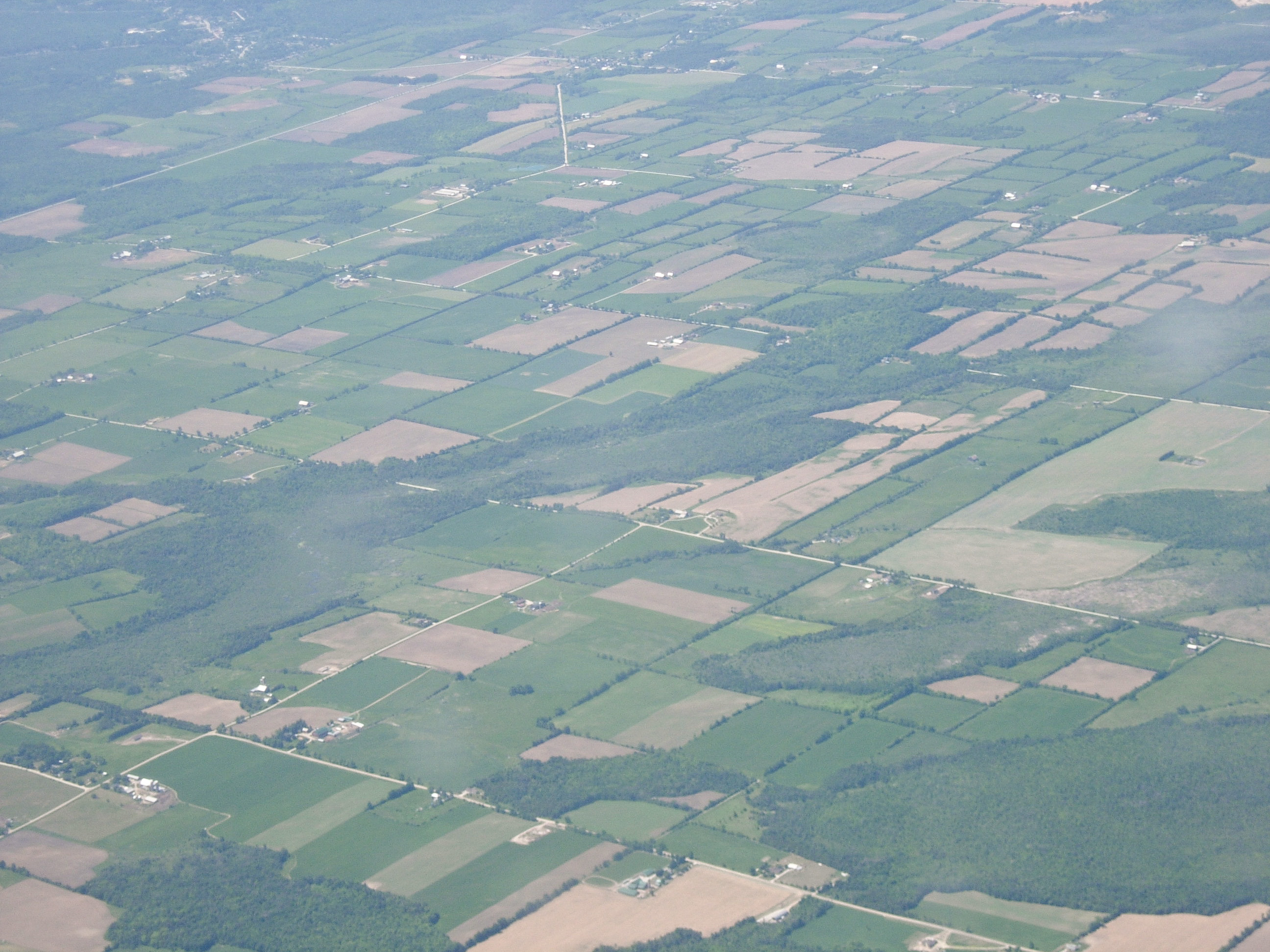
I must have taken this photo through a very dirty window. Even so, it shows how many colours a patchwork of fields can contain.
Stone walls are the traditional method of dividing fields in my part of Quebec. They are the result of necessity — in earlier days, stones had to be cleared so a field could be plowed and planted, which meant they had to be moved somewhere. So either they went into walls …

This crumbling stone wall once separated two farm fields at Glen Villa.
… or into rock piles at edges of the fields-to-be.
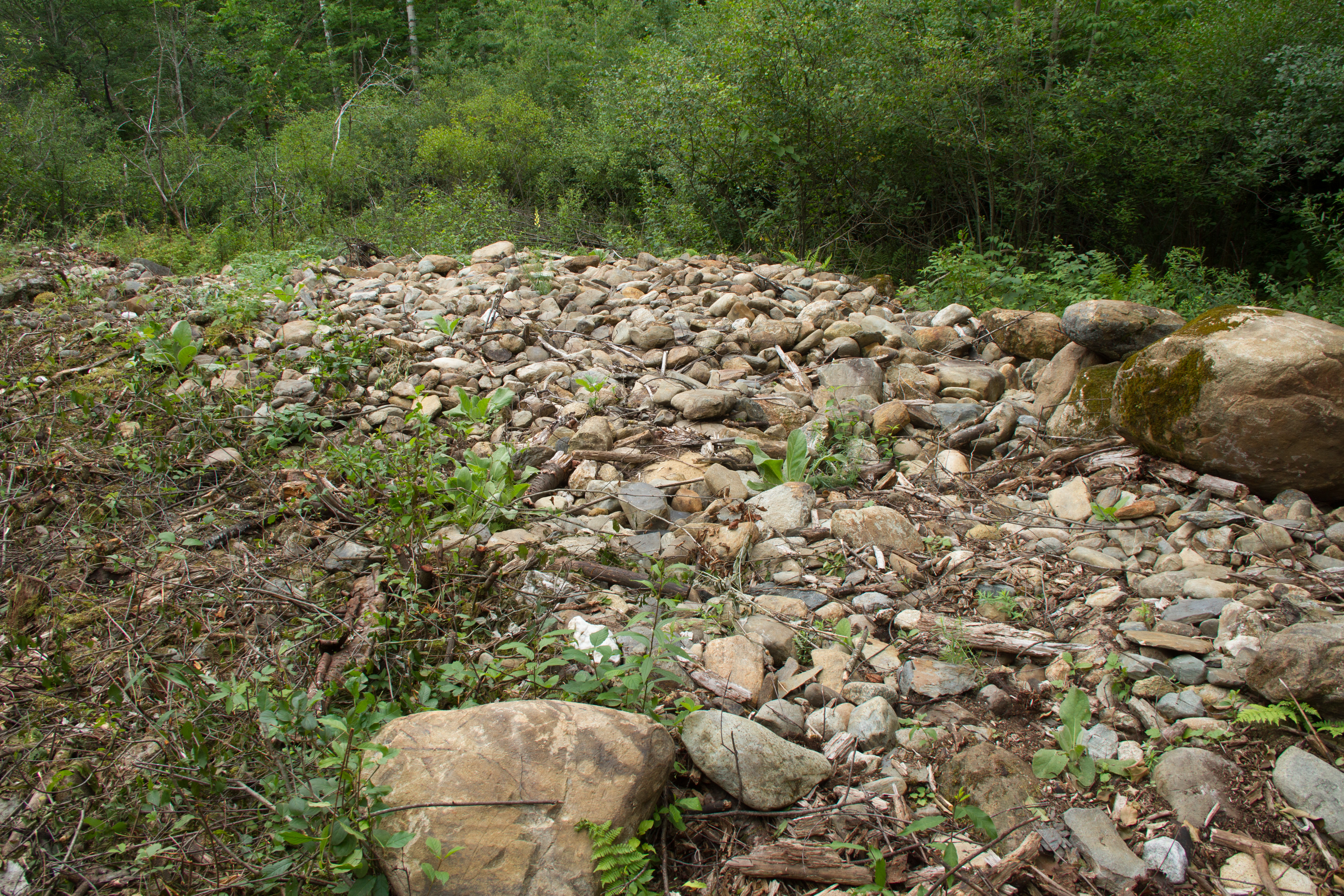
I discovered this rock pile when deciding on the route of Timelines, the trail that explores ideas about history and memory.
Fences mark both borders and boundaries but the message they carry is different from the message of a stone wall. The poet notes that while a wall separates, it always needs mending, the “frozen-ground-swell under it” making “gaps even two can pass abreast.” The fence is a stronger barrier, telling the outsider to go away, to stay out, that this is my land, not yours.

The fence here is telling the deer to go away. It works well, allowing plants to be seen and deer to be excluded. I’ve used the design in fences at several places in the garden at Glen Villa.
The Abenaki used to move across a land that had no borders or boundaries, and I’ve shown this at Glen Villa in several scenes. Because the Abenaki believe that human beings were created from the ash tree, I used inverted ash branches to show a group striding across an old farm field.
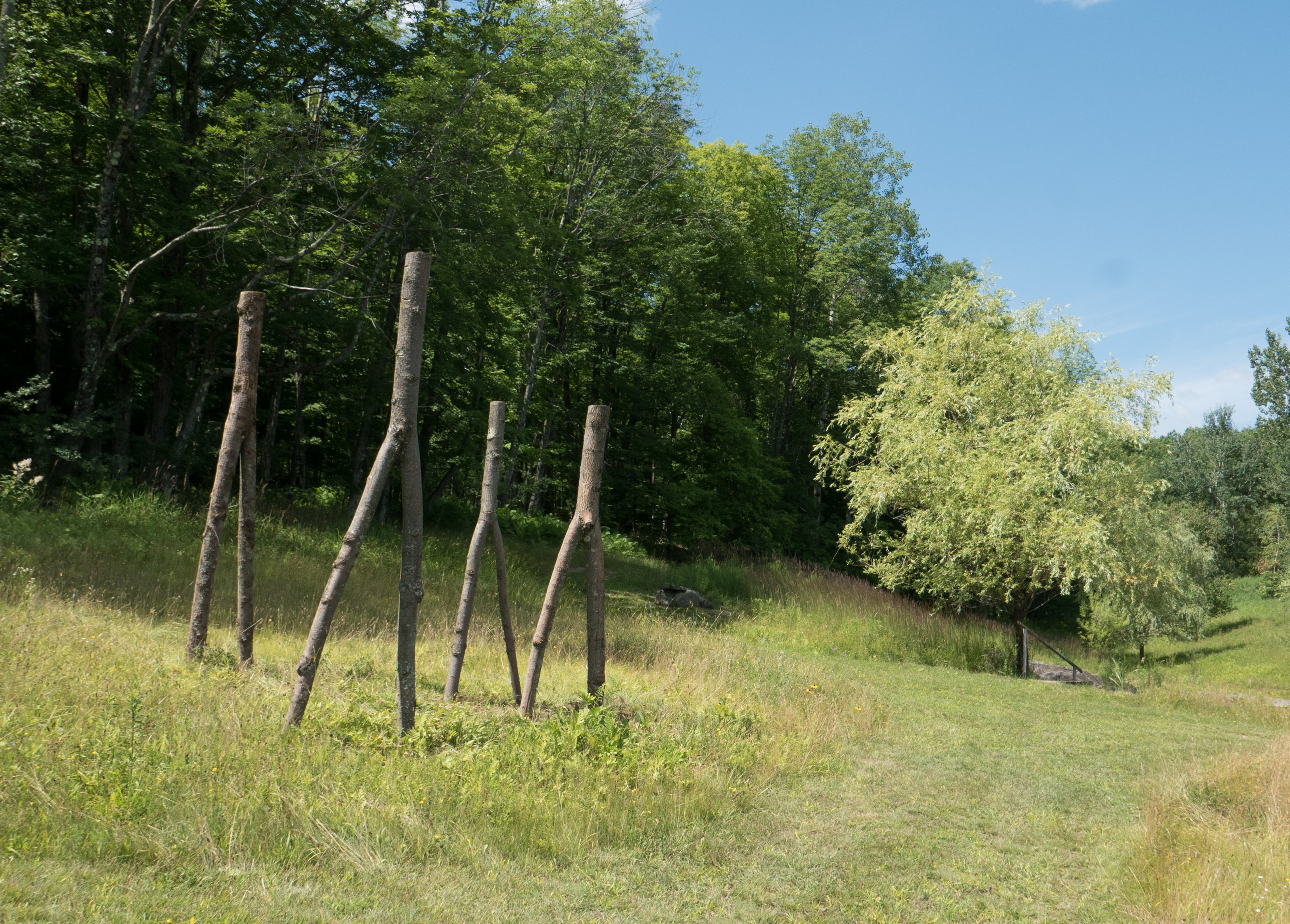
The Abenaki were migratory and I used the slope of the land to show the chronology of their history.
Lower in the field, the Walkers encounter signs that settlers have arrived. First in time came split rail fences, then barbed wire which I have used to entangle the walking figures.
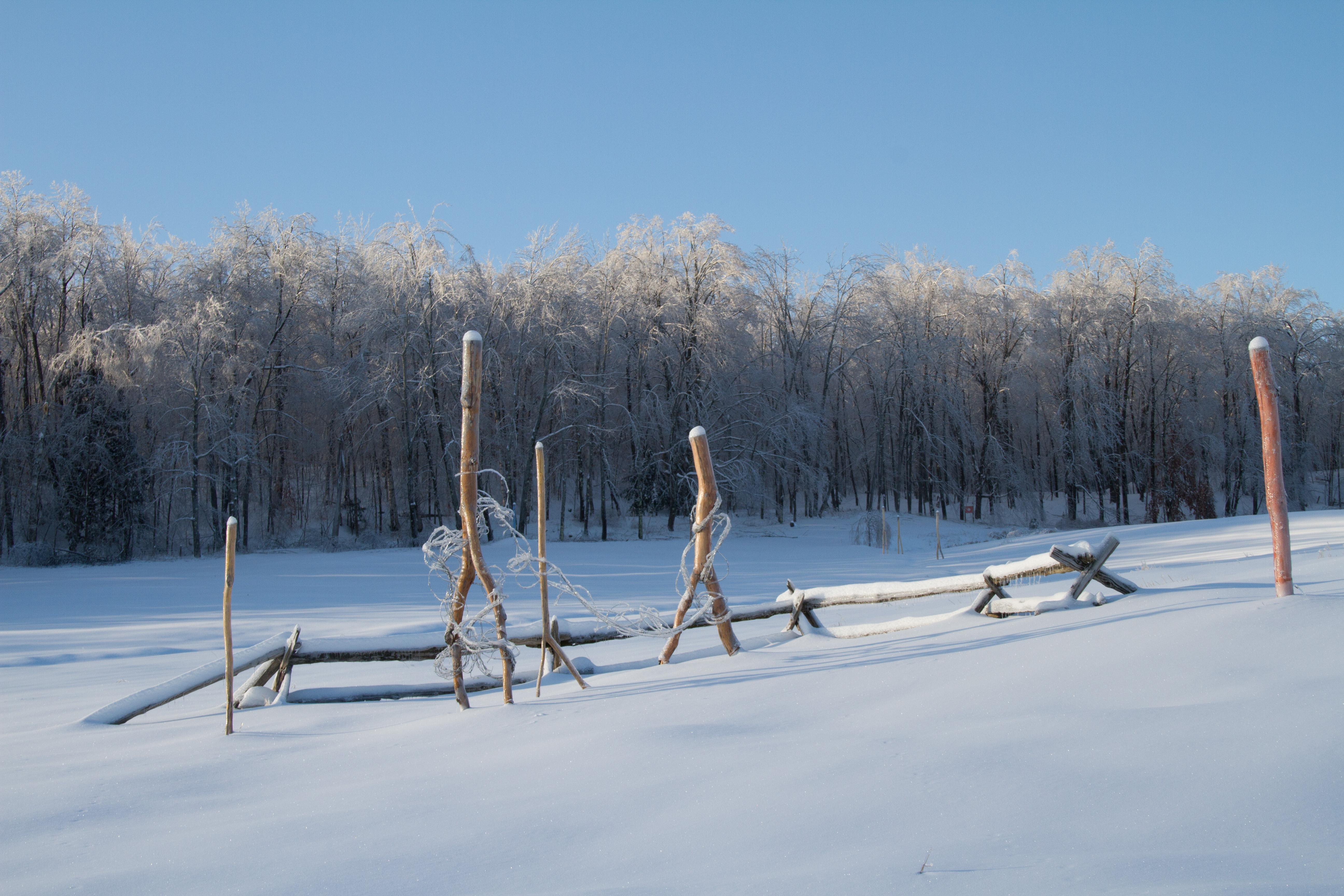
A winter frost makes a painful scene look beautiful.
In gardens that are more conventional than mine, more standard things act as boundaries. Hedges of all shapes and sizes are often used to differentiate one part of a garden from another.

Hedges define the boundaries of this walkway into one of the nine garden ‘rooms’ within Scampston Hall’s Walled Garden.
See-through fences or gates do the same.
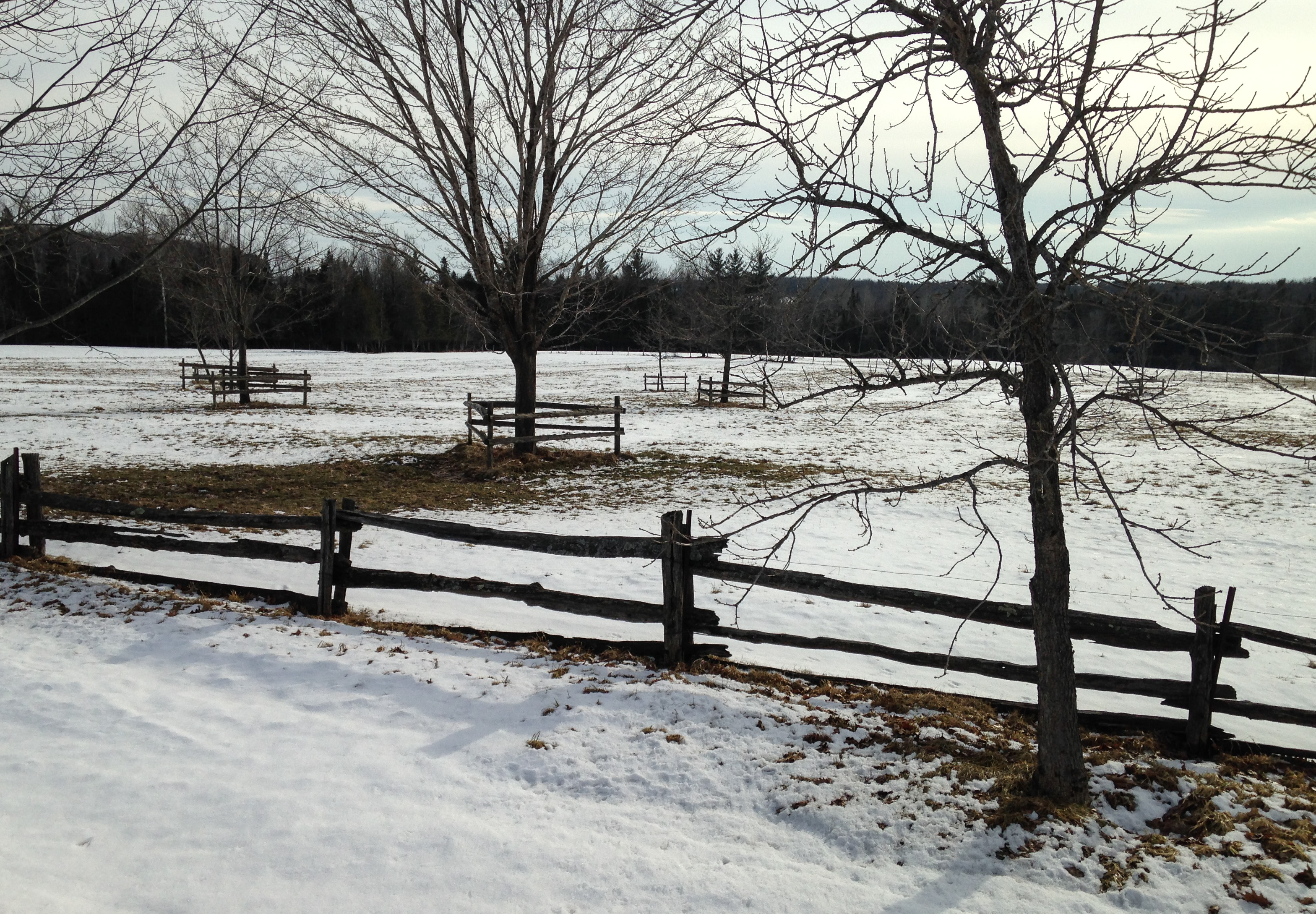
Split rail fences remain common sights in Quebec’s Eastern Townships. Using them to protect trees from cattle and other animals is much less common.
At the China Terrace, my recreation of the resort hotel that once stood on the Glen Villa site, hotel ‘rooms’ are bordered by blocks made of slate and china shattered when the hotel burned down in 1909.
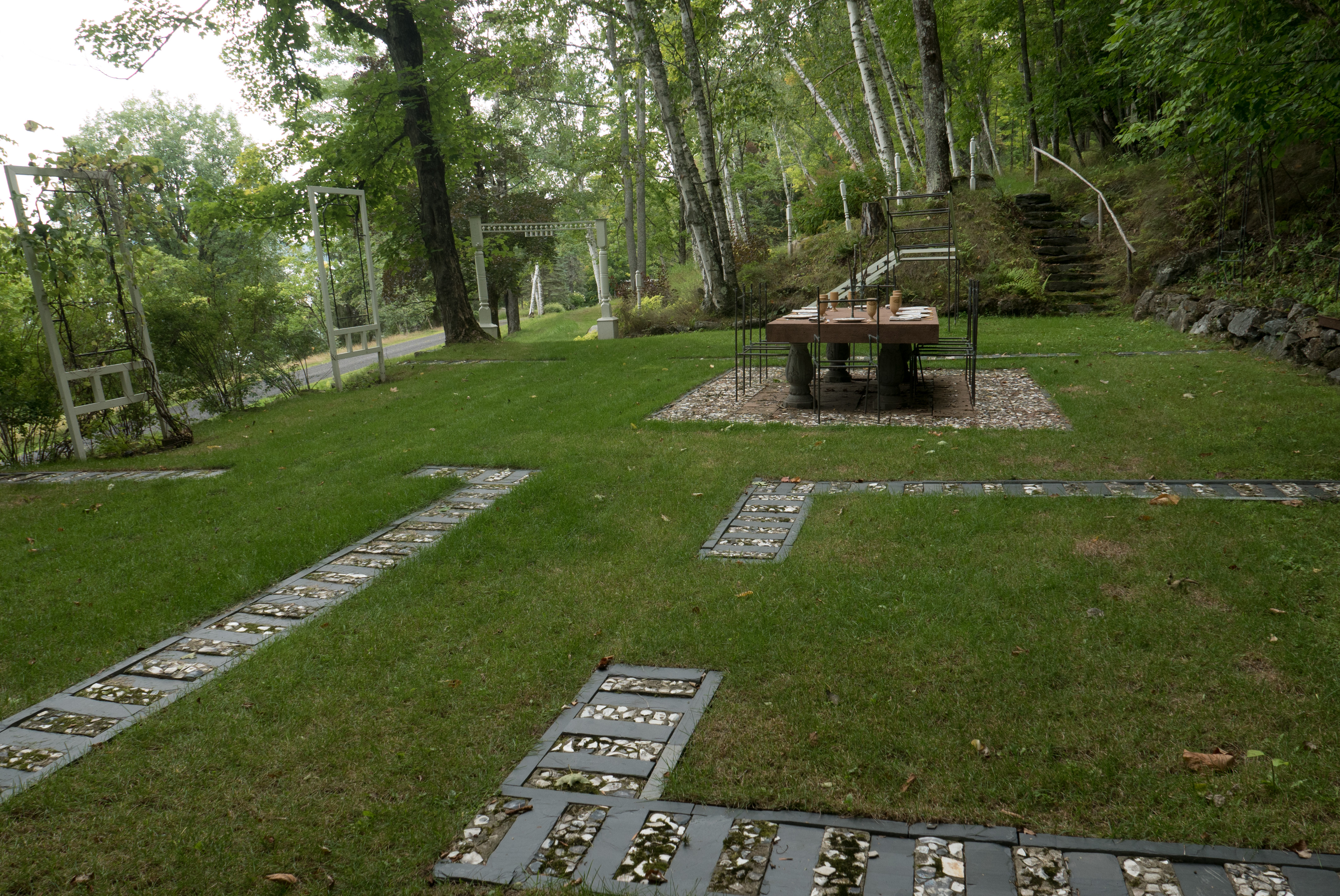
The brick and slate blocks at the China Terrace mark imaginary walls between imaginary rooms.
The small stream at Glen Villa marks a boundary, not between countries as rivers do, but simply between one side of the stream and the other.

The stream running through the meadow creates a wavy black line, a strong contrast to the white snow.
Knowledgeable linguists may be able to explain the difference between a flower bed and a border. I can’t do this with any certainty. Generally, though, I think of borders as linear strips of ground filled with shrubs and flowers, like the new North South Arrow at Glen Villa
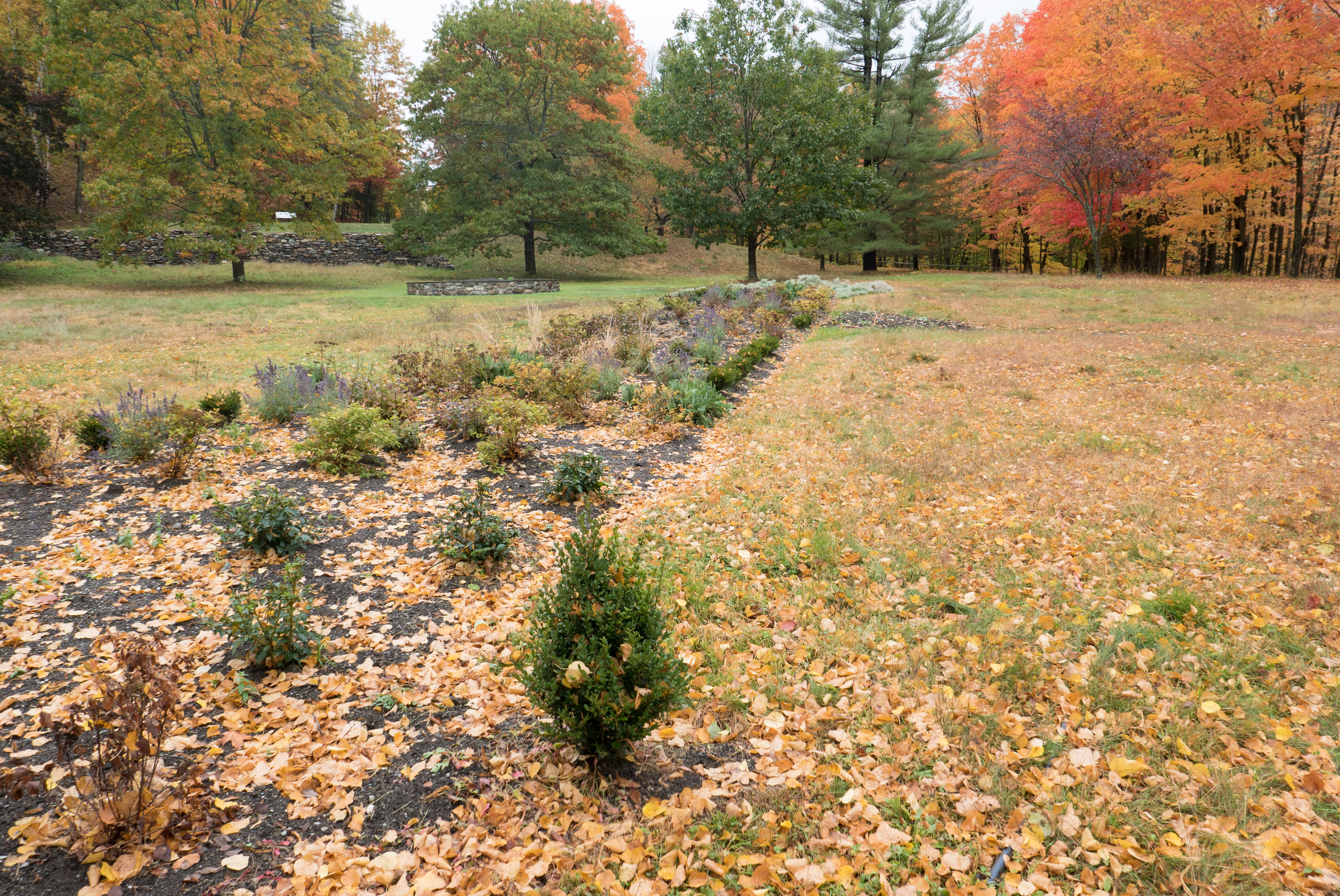
This was how the Arrow looked last fall. I hope to finish planting it this summer.
For me, a bed (aka, a flower bed) can have any shape — it can be round, square, triangular or some shape without a name. I don’t often describe the plantings around the Cascade as a flower bed, but according this definition I suppose they are.

Yellow flag iris make a splash at the Cascade in early summer.
The Roman god Terminus protected the markers that indicated the end point of one thing and, presumably, the beginning of another. Greeks called these markers Herms, after the god Hermes, and over time both the Greek and Roman forms acquired a particular shape, similar to the Term I saw at Rousham, a wonderful historic garden in England.
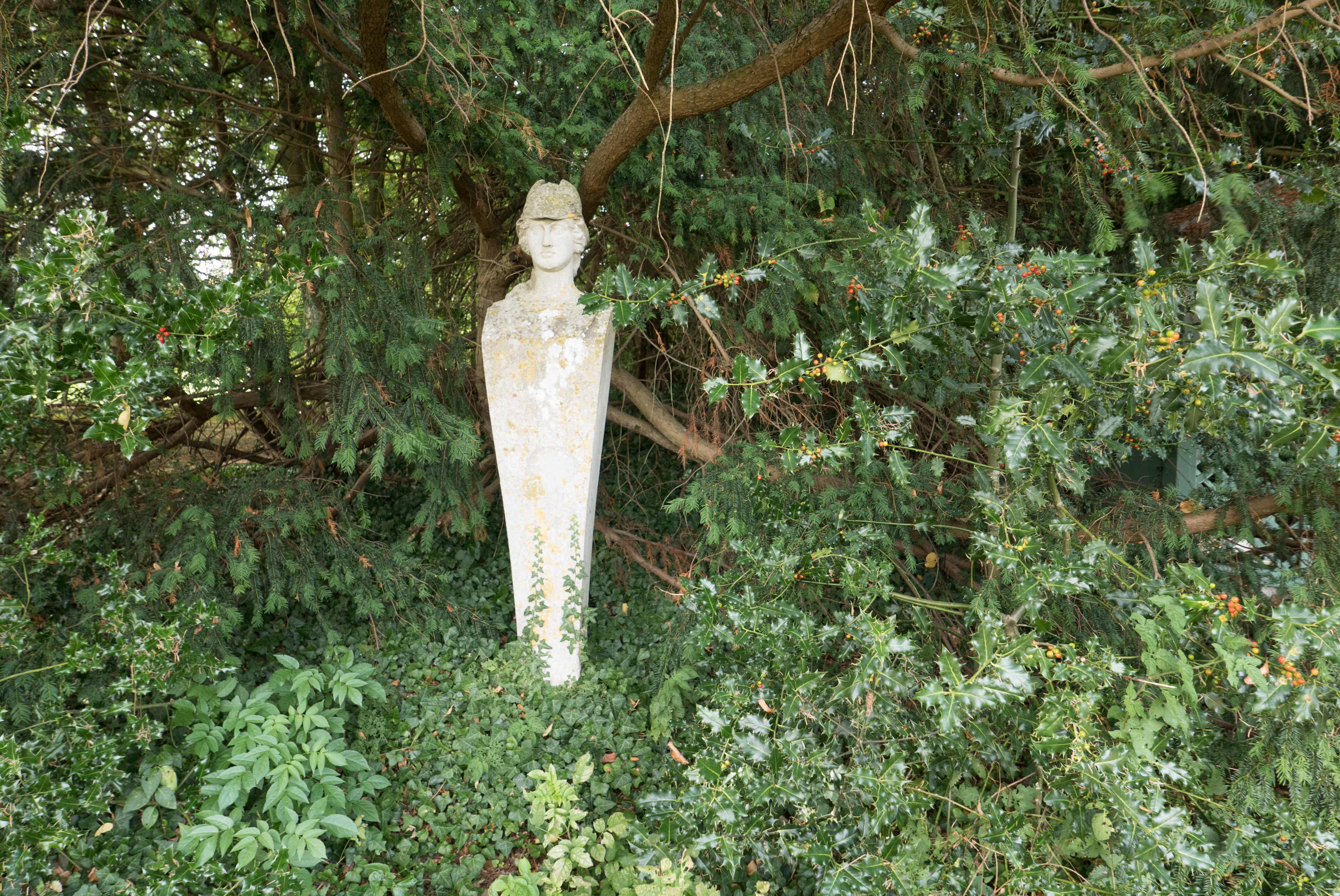
Earlier versions of Terms or Herms showed male genitalia. By the 17th century, the figures had become less revealing.
I’m using the idea of a Term figuratively in a section of Mythos, the extension of Timelines that considers how mythology shapes our views of the world and how, by re-thinking the stories, we can re-shape the message they send.

This is one of the seven figures I’ve made over the winter to show men turned to stone by Medusa.
I’ve used the same shape as traditional Terms to re-tell Medusa’s story, twisting the idea of the border, or end point, to illustrate Medusa’s effect — which was to turn to stone those men who dared to look directly at her. The end of these stone-like figures is death, the end of life. Which is sometimes what this pandemic feels like.
What do you call the planted areas in your garden? Are they borders or beds? And does it matter?






A lovely post, Pat — I call our plantings beds, not borders, for what that’s worth. And here in Asheville, we don’t have any straight lines at all, aside from the raised stone vegetable garden rectangles. In Quebec, in contrast, we have lovely rustic fences made of aged white cedar. In our previous house in upstate South Carolina, we had a lovely aged picket fence surrounding much of our back garden, for our furry fellows to be, while we were at work.
I certainly hope our border (the US-Canadian one) opens up this summer in a phased way to those of us who’ve been vaccinated and have reasons to cross the border. It’s hard to imagine that it will actually be open to all comers until fall, unfortunately.
What an appropriate discussion given the tragedy of recent borders between the USA and its two neighbors, particularly the Mexican border. It was a lovely pictorial mini-lecture on various every day demarcation definitions and their uses.
Thank you. And last night coincidently a (small) group gathered to celebrate a birthday and our discussion centered on this very idea of borders/boundaries. In this case it started with a discussion of fences, which in NL were created purely to keep either wild animals (or dogs) out from vegetable gardens along a roadside (earth is scarce here) or coyotes and other animals from killing sheep in community or private pastures. Then we started talking about fences and their prevalence in most countries, even in urban areas, except in downtown St. John’s where houses abut the street. I will send your post to this group.
Strange coincidences, Susan. We are also celebrating a birthday — Derek’s, today. I hate to think how old he is, makes me even older!
What is the difference between a bed nd border? I’m really not sure. I have a personal definition of a border, which is to say a planting that borders some structure – a house, a sidewalk. But I’m sure that isn’t really correct. Enjoyed your essay and images, as always.